Bird
FromWikipedia,thefreeencyclopedia
Jumpto:navigation,search
Forotheruses,seeBird(disambiguation).
"Aves"redirectshere.Forotheruses,seeAves(disambiguation).
Birds
Fossilrange:150–0MaPreЄЄOSDCPTJKPgNLateJurassic–Recent
Double-crestedCormorant,Phalacrocoraxauritus
Scientificclassification
Kingdom:Animalia
Phylum:Chordata
Subphylum:Vertebrata
(unranked):Archosauria
Class:Aves
Linnaeus,1758
Orders
Abouttwodozen-seesectionbelow
Listentothisarticle(info/dl)
Thisaudiofilewascreatedfromarevisiondated2008-01-05,anddoesnotreflectsubsequenteditstothearticle.(Audiohelp)
MorespokenarticlesBirds(classAves)arebipedal,endothermic(warm-blooded),vertebrateanimalsthatlayeggs.Therearearound10,000livingspecies,makingthemthemostdiversetetrapodvertebrates.Theyinhabitecosystemsacrosstheglobe,fromtheArctictotheAntarctic.Birdsrangeinsizefromthe5cm(2in)BeeHummingbirdtothe2.7m(9ft)Ostrich.ThefossilrecordindicatesthatbirdsevolvedfromtheropoddinosaursduringtheJurassicperiod,around150–200Ma(millionyearsago),andtheearliestknownbirdistheLateJurassicarchaeopteryx,c155–150Ma.MostpaleontologistsregardbirdsastheonlycladeofdinosaursthatsurvivedtheCretaceous–Tertiaryextinctioneventapproximately65.5Ma.
ModernbirdsarecharacterisedbyFEATHERS,abeakwithnoteeth,thelayingofhard-shelledeggs,ahighmetabolicrate,afour-chamberedheart,andalightweightbutstrongskeleton.Allbirdshaveforelimbsmodifiedaswingsandmostcanfly,withsomeexceptionsincludingratites,penguins,andanumberofdiverseendemicislandspecies.Birdsalsohaveuniquedigestiveandrespiratorysystemsthatarehighlyadaptedforflight.Somebirds,especiallycorvidsandparrots,areamongthemostintelligentanimalspecies;anumberofbirdspecieshavebeenobservedmanufacturingandusingtools,andmanysocialspeciesexhibitculturaltransmissionofknowledgeacrossgenerations.
Manyspeciesundertakelongdistanceannualmigrations,andmanymoreperformshorterirregularmovements.Birdsaresocial;theycommunicateusingvisualsignalsandthroughcallsandsongs,andparticipateinsocialbehavioursincludingcooperativebreedingandhunting,flocking,andmobbingofpredators.Thevastmajorityofbirdspeciesaresociallymonogamous,usuallyforonebreedingseasonatatime,sometimesforyears,butrarelyforlife.Otherspecieshavebreedingsystemsthatarepolygynous("manyfemales")or,rarely,polyandrous("manymales").Eggsareusuallylaidinanestandincubatedbytheparents.Mostbirdshaveanextendedperiodofparentalcareafterhatching.
Manyspeciesareofeconomicimportance,mostlyassourcesoffoodacquiredthroughhuntingorfarming.Somespecies,particularlysongbirdsandparrots,arepopularaspets.Otherusesincludetheharvestingofguano(droppings)foruseasafertiliser.Birdsfigureprominentlyinallaspectsofhumanculturefromreligiontopoetrytopopularmusic.About120–130specieshavebecomeextinctasaresultofhumanactivitysincethe17thcentury,andhundredsmorebeforethen.Currentlyabout1,200speciesofbirdsarethreatenedwithextinctionbyhumanactivities,thougheffortsareunderwaytoprotectthem.
Contents[hide]
1Evolutionandtaxonomy
1.1Dinosaursandtheoriginofbirds
1.1.1Alternativetheoriesandcontroversies
1.2Earlyevolutionofbirds
1.3Radiationofmodernbirds
1.3.1Modernbirdorders
2Distribution
3Anatomyandphysiology
3.1Chromosomes
3.2Feathers,plumage,andscales
3.3Flight
4Behaviour
4.1Dietandfeeding
4.2Migration
4.3Communication
4.4Flockingandotherassociations
4.5Restingandroosting
4.6Breeding
4.6.1Socialsystems
4.6.2Territories,nestingandincubation
4.6.3Parentalcareandfledging
4.6.4Broodparasites
5Ecology
6Relationshipwithhumans
6.1Economicimportance
6.2Religion,folkloreandculture
6.3Conservation
7References
8Externallinks
Evolutionandtaxonomy
Mainarticle:Birdevolution
Archaeopteryx,theearliestknownbirdThefirstclassificationofbirdswasdevelopedbyFrancisWillughbyandJohnRayintheir1676volumeOrnithologiae.[1]CarolusLinnaeusmodifiedthatworkin1758todevisethetaxonomicclassificationsystemcurrentlyinuse.[2]BirdsarecategorisedasthebiologicalclassAvesinLinnaeantaxonomy.PhylogenetictaxonomyplacesAvesinthedinosaurcladeTheropoda.[3]Avesandasistergroup,thecladeCrocodilia,togetherarethesolelivingmembersofthereptilecladeArchosauria.Phylogenetically,AvesiscommonlydefinedasalldescendantsofthemostrecentcommonancestorofmodernbirdsandArchaeopteryxlithographica.[4]Archaeopteryx,fromtheTithonianstageoftheLateJurassic(some150–145millionyearsago),istheearliestknownbirdunderthisdefinition.Others,includingJacquesGauthierandadherentsofthePhylocodesystem,havedefinedAvestoincludeonlythemodernbirdgroups,excludingmostgroupsknownonlyfromfossils,andassigningthem,instead,totheAvialae[5]inparttoavoidtheuncertaintiesabouttheplacementofArchaeopteryxinrelationtoanimalstraditionallythoughtofastheropoddinosaurs.
AllmodernbirdsliewithinthesubclassNeornithes,whichhastwosubdivisions:thePaleognathae,containingmostlyflightlessbirdslikeostriches,andthewildlydiverseNeognathae,containingallotherbirds.[3]Thesetwosubdivisionsareoftengiventherankofsuperorder,[6]althoughLivezey&Zusiassignedthem"cohort"rank.[3]Dependingonthetaxonomicviewpoint,thenumberofknownlivingbirdspeciesvariesanywherefrom9,800[7]to10,050.[8]
Dinosaursandtheoriginofbirds
Mainarticle:Originofbirds
Confuciusornis,aCretaceousbirdfromChinaFossilevidenceandintensivebiologicalanalyseshavedemonstratedbeyondanyreasonabledoubtthatbirdsaretheropoddinosaurs.Morespecifically,theyaremembersofManiraptora,agroupoftheropodswhichincludesdromaeosaursandoviraptorids,amongothers.[9]Asscientistsdiscovermorenon-aviantheropodsthatarecloselyrelatedtobirds,thepreviouslycleardistinctionbetweennon-birdsandbirdshasbecomeblurred.RecentdiscoveriesintheLiaoningProvinceofnortheastChina,whichdemonstratethatmanysmalltheropoddinosaurshadfeathers,contributetothisambiguity.[10]
Theconsensusviewincontemporarypaleontologyisthatthebirds,Aves,aretheclosestrelativesofthedeinonychosaurs,whichincludedromaeosauridsandtroodontids.Together,thesethreeformagroupcalledParaves.ThebasaldromaeosaurMicroraptorhasfeatureswhichmayhaveenabledittoglideorfly.Themostbasaldeinonychosaursareverysmall.Thisevidenceraisesthepossibilitythattheancestorofallparaviansmayhavebeenarboreal,and/ormayhavebeenabletoglide.[11][12]
TheLateJurassicArchaeopteryxiswell-knownasoneofthefirsttransitionalfossilstobefoundanditprovidedsupportforthetheoryofevolutioninthelate19thcentury.Archaeopteryxhasclearlyreptiliancharacters:teeth,clawedfingers,andalong,lizard-liketail,butithasfinelypreservedwingswithflightfeathersidenticaltothoseofmodernbirds.Itisnotconsideredadirectancestorofmodernbirds,butistheoldestandmostprimitivememberofAvesorAvialae,anditisprobablycloselyrelatedtotherealancestor.IthasevenbeensuggestedthatArchaeopteryxwasadinosaurthatwasnomorecloselyrelatedtobirdsthanwereotherdinosaurgroups,[13]andthatAvimimuswasmorelikelytobetheancestorofallbirdsthanArchaeopteryx.[14]
Alternativetheoriesandcontroversies
Therehavebeenmanycontroversiesinthestudyoftheoriginofbirds.Earlydisagreementsincludedwhetherbirdsevolvedfromdinosaursormoreprimitivearchosaurs.Withinthedinosaurcampthereweredisagreementsastowhetherornithischianortheropoddinosaurswerethemorelikelyancestors.[15]Althoughornithischian(bird-hipped)dinosaurssharethehipstructureofmodernbirds,birdsarethoughttohaveoriginatedfromthesaurischian(lizard-hipped)dinosaurs,andthereforeevolvedtheirhipstructureindependently.[16]Infact,abird-likehipstructureevolvedathirdtimeamongapeculiargroupoftheropodsknownastheTherizinosauridae.
ScientistsLarryMartinandAlanFeducciabelievethatbirdsarenotdinosaurs,butthatbirdsevolvedfromearlyarchosaurslikeLongisquama.Themajorityoftheirpublicationsarguedthatthesimilaritiesbetweenbirdsandmaniraptorandinosaurswereconvergent,andthatthetwowereunrelated.Inthelate1990stheevidencethatbirdsweremaniraptoransbecamealmostindisputable,soMartinandFeducciaadoptedamodifiedversionofahypothesisbydinosaurartistGregoryS.Paul;wheremaniraptoransaresecondarilyflightlessbirdsbut,[17]intheirversion,birdsevolveddirectlyfromLongisquama.Thusbirdsarestillnotdinosaurs,butneitheraremostoftheknownspeciesthatarecurrentlyclassifiedastheropoddinosaurs.Maniraptoransare,instead,flightless,archosaurian,birds.[18]Thistheoryiscontestedbymostpaleontologists.[19]Thefeaturescitedasevidenceofflightlessnessareinterpretedbymainstreampaleontologistsasexaptations,or"pre-adaptations",thatmaniraptoransinheritedfromtheircommonancestorwithbirds.
Protoavistexensiswasdescribedin1991asabirdolderthanArchaeopteryx.Criticshaveindicatedthatthefossilispoorlypreserved,extensivelyreconstructed,andmaybeachimera(madeupoffossilizedbonesfromseveraldifferentkindsofanimals).Thebraincaseismostlikelythatofaveryearlycoelurosaur[20]
Earlyevolutionofbirds
Seealso:Listoffossilbirds
Aves
Archaeopteryx
Pygostylia
Confuciusornithidae
Ornithothoraces
Enantiornithes
Ornithurae
Hesperornithiformes
Neornithes
BasalbirdphylogenysimplifiedafterChiappe,2007[21]
BirdsdiversifiedintoawidevarietyofformsduringtheCretaceousPeriod.[21]Manygroupsretainedprimitivecharacteristics,suchasclawedwingsandteeth,thoughthelatterwerelostindependentlyinanumberofbirdgroups,includingmodernbirds(Neornithes).Whiletheearliestforms,suchasArchaeopteryxandJeholornis,retainedthelongbonytailsoftheirancestors,[21]thetailsofmoreadvancedbirdswereshortenedwiththeadventofthepygostyleboneinthecladePygostylia.
Thefirstlarge,diverselineageofshort-tailedbirdstoevolveweretheEnantiornithes,or"oppositebirds",sonamedbecausetheconstructionoftheirshoulderboneswasinreversetothatofmodernbirds.Enantiornithesoccupiedawidearrayofecologicalniches,fromsand-probingshorebirdsandfish-eaterstotree-dwellingformsandseed-eaters.[21]Moreadvancedlineagesalsospecialisedineatingfish,likethesuperficiallygull-likesubclassofIchthyornithes("fishbirds").[22]OneorderofMesozoicseabirds,theHesperornithiformes,becamesowelladaptedtohuntingfishinmarineenvironmentsthattheylosttheabilitytoflyandbecameprimarilyaquatic.Despitetheirextremespecialisations,theHesperornithiformesrepresentsomeoftheclosestrelativesofmodernbirds.[21]
Radiationofmodernbirds
Seealso:Sibley-Ahlquisttaxonomyanddinosaurclassification
Containingallmodernbirds,thesubclassNeornithesis,duetothediscoveryofVegavis,nowknowntohaveevolvedintosomebasiclineagesbytheendoftheCretaceous[23]andissplitintotwosuperorders,thePaleognathaeandNeognathae.ThepaleognathsincludethetinamousofCentralandSouthAmericaandtheratites.ThebasaldivergencefromtheremainingNeognatheswasthatoftheGalloanserae,thesuperordercontainingtheAnseriformes(ducks,geese,swansandscreamers)andtheGalliformes(thepheasants,grouse,andtheirallies,togetherwiththemoundbuildersandtheguansandtheirallies).Thedatesforthesplitsaremuchdebatedbyscientists.ItisagreedthattheNeornithesevolvedintheCretaceous,andthatthesplitbetweentheGalloanserifromotherNeognathesoccurredbeforetheK–Textinctionevent,buttherearedifferentopinionsaboutwhethertheradiationoftheremainingNeognathesoccurredbeforeoraftertheextinctionoftheotherdinosaurs.[24]Thisdisagreementisinpartcausedbyadivergenceintheevidence;moleculardatingsuggestsaCretaceousradiation,whilefossilevidencesupportsaTertiaryradiation.Attemptstoreconcilethemolecularandfossilevidencehaveprovedcontroversial.[24][25]
Theclassificationofbirdsisacontentiousissue.SibleyandAhlquist'sPhylogenyandClassificationofBirds(1990)isalandmarkworkontheclassificationofbirds,[26]althoughitisfrequentlydebatedandconstantlyrevised.Mostevidenceseemstosuggestthattheassignmentofordersisaccurate,[27]butscientistsdisagreeabouttherelationshipsbetweentheordersthemselves;evidencefrommodernbirdanatomy,fossilsandDNAhaveallbeenbroughttobearontheproblem,butnostrongconsensushasemerged.Morerecently,newfossilandmolecularevidenceisprovidinganincreasinglyclearpictureoftheevolutionofmodernbirdorders.
Modernbirdorders
NeornithesPaleognathae
Struthioniformes
Tinamiformes
NeognathaeOtherbirds
Galloanserae
Anseriformes
Galliformes
Basaldivergencesofmodernbirds
basedonSibley-Ahlquisttaxonomy
ThisisalistofthetaxonomicordersinthesubclassNeornithes,ormodernbirds.Thislistusesthetraditionalclassification(theso-calledClementsorder),revisedbytheSibley-Monroeclassification.Thelistofbirdsgivesamoredetailedsummaryoftheorders,includingfamilies.
SubclassNeornithes
Paleognathae:
Struthioniformes—ostriches,emus,kiwis,andallies
Tinamiformes—tinamous
Neognathae:
Anseriformes—waterfowl
Galliformes—fowl
Charadriiformes—gulls,button-quails,ploversandallies
Gaviiformes—loons
Podicipediformes—grebes
Procellariiformes—albatrosses,petrels,andallies
Sphenisciformes—penguins
Pelecaniformes—pelicansandallies
Phaethontiformes—tropicbirds
Ciconiiformes—storksandallies
Cathartiformes—NewWorldvultures
Phoenicopteriformes—flamingos
Falconiformes—falcons,Eagles,hawksandallies
Gruiformes—cranesandallies
Pteroclidiformes—sandgrouse
Columbiformes—dovesandpigeons
Psittaciformes—parrotsandallies
Cuculiformes—cuckoosandturacos
Opisthocomiformes—hoatzin
Strigiformes—owls
Caprimulgiformes—nightjarsandallies
Apodiformes—swiftsandhummingbirds
Coraciiformes—kingfishersandallies
Piciformes—woodpeckersandallies
Trogoniformes—trogons
Coliiformes—mousebirds
Passeriformes—passerines
TheradicallydifferentSibley-Monroeclassification(Sibley-Ahlquisttaxonomy),basedonmoleculardata,foundwidespreadadoptioninafewaspects,asrecentmolecular,fossil,andanatomicalevidencesupportedtheGalloanseraeforexample.[24]
Distribution
TherangeoftheHouseSparrowhasexpandeddramaticallyduetohumanactivities.[28]Birdsliveandbreedinmostterrestrialhabitatsandonallsevencontinents,reachingtheirsouthernextremeintheSnowPetrel'sbreedingcoloniesupto440kilometres(270mi)inlandinAntarctica.[29]Thehighestbirddiversityoccursintropicalregions.Itwasearlierthoughtthatthishighdiversitywastheresultofhigherspeciationratesinthetropics,howeverrecentstudiesfoundhigherspeciationratesinthehighlatitudesthatwereoffsetbygreaterextinctionratesthaninthetropics.[30]Severalfamiliesofbirdshaveadaptedtolifebothontheworld'soceansandinthem,withsomeseabirdspeciescomingashoreonlytobreed[31]andsomepenguinshavebeenrecordeddivingupto300metres(980ft).[32]
Manybirdspecieshaveestablishedbreedingpopulationsinareastowhichtheyhavebeenintroducedbyhumans.Someoftheseintroductionshavebeendeliberate;theRing-neckedPheasant,forexample,hasbeenintroducedaroundtheworldasagamebird.[33]Othershavebeenaccidental,suchastheestablishmentofwildMonkParakeetsinseveralNorthAmericancitiesaftertheirescapefromcaptivity.[34]Somespecies,includingCattleEgret,[35]Yellow-headedCaracara[36]andGalah,[37]havespreadnaturallyfarbeyondtheiroriginalrangesasagriculturalpracticescreatedsuitablenewhabitat.
Anatomyandphysiology
Mainarticles:BirdanatomyandBirdvision
Externalanatomyofabird:1Beak,2Head,3Iris,4Pupil,5Mantle,6Lessercoverts,7Scapulars,8Mediancoverts,9Tertials,10Rump,11Primaries,12Vent,13Thigh,14Tibio-tarsalarticulation,15Tarsus,16Feet,17Tibia,18Belly,19Flanks,20Breast,21Throat,22WattleListentothisarticle(info/dl)
Thisaudiofilewascreatedfromarevisiondated2008-01-05,anddoesnotreflectsubsequenteditstothearticle.(Audiohelp)
MorespokenarticlesComparedwithothervertebrates,birdshaveabodyplanthatshowsmanyunusualadaptations,mostlytofacilitateflight.
Theskeletonconsistsofverylightweightbones.Theyhavelargeair-filledcavities(calledpneumaticcavities)whichconnectwiththerespiratorysystem.[38]Theskullbonesarefusedanddonotshowcranialsutures.[39]Theorbitsarelargeandseparatedbyabonyseptum.Thespinehascervical,thoracic,lumbarandcaudalregionswiththenumberofcervical(neck)vertebraehighlyvariableandespeciallyflexible,butmovementisreducedintheanteriorthoracicvertebraeandabsentinthelatervertebrae.[40]Thelastfewarefusedwiththepelvistoformthesynsacrum.[39]Theribsareflattenedandthesternumiskeeledfortheattachmentofflightmusclesexceptintheflightlessbirdorders.Theforelimbsaremodifiedintowings.[41]
Likethereptiles,birdsareprimarilyuricotelic,thatis,theirkidneysextractnitrogenouswastesfromtheirbloodstreamandexcreteitasuricacidinsteadofureaorammoniaviatheuretersintotheintestine.Birdsdonothaveaurinarybladderorexternalurethralopeninganduricacidisexcretedalongwithfecesasasemisolidwaste.[42][43]However,birdssuchashummingbirdscanbefacultativelyammonotelic,excretingmostofthenitrogenouswastesasammonia.[44]Theyalsoexcretecreatine,ratherthancreatininelikemammals.[39]Thismaterial,aswellastheoutputoftheintestines,emergesfromthebird'scloaca.[45][46]Thecloacaisamulti-purposeopening:wasteisexpelledthroughit,birdsmatebyjoiningcloaca,andfemaleslayeggsfromit.Inaddition,manyspeciesofbirdsregurgitatepellets.[47]Thedigestivesystemofbirdsisunique,withacropforstorageandagizzardthatcontainsswallowedstonesforgrindingfoodtocompensateforthelackofteeth.[48]Mostbirdsarehighlyadaptedforrapiddigestiontoaidwithflight.[49]Somemigratorybirdshaveadaptedtouseproteinfrommanypartsoftheirbodies,includingproteinfromtheintestines,asadditionalenergyduringmigration.[50]
Birdshaveoneofthemostcomplexrespiratorysystemsofallanimalgroups.[39]Uponinhalation,75%ofthefreshairbypassesthelungsandflowsdirectlyintoaposteriorairsacwhichextendsfromthelungsandconnectswithairspacesinthebonesandfillsthemwithair.Theother25%oftheairgoesdirectlyintothelungs.Whenthebirdexhales,theusedairflowsoutofthelungandthestoredfreshairfromtheposteriorairsacissimultaneouslyforcedintothelungs.Thus,abird'slungsreceiveaconstantsupplyoffreshairduringbothinhalationandexhalation.[51]Soundproductionisachievedusingthesyrinx,amuscularchamberwithseveraltympanicmembraneswhichissituatedatthelowerendofthetrachea,fromwhereitseparates.[52]Thebird'shearthasfourchambersandtherightaorticarchgivesrisetosystemiccirculation(unlikeinthemammalswheretheleftarchisinvolved).[39]Thepostcavareceivesbloodfromthelimbsviatherenalportalsystem.Unlikeinmammals,theredbloodcellsinbirdshaveanucleus.[53]
Thenervoussystemislargerelativetothebird'ssize.[39]Themostdevelopedpartofthebrainistheonethatcontrolstheflight-relatedfunctions,whilethecerebellumcoordinatesmovementandthecerebrumcontrolsbehaviourpatterns,navigation,matingandnestbuilding.Mostbirdshaveapoorsenseofsmellwithnotableexceptionsincludingkiwis,[54]NewWorldvultures[55]andtubenoses.[56]Theavianvisualsystemisusuallyhighlydeveloped.Waterbirdshavespecialflexiblelenses,allowingaccommodationforvisioninairandwater.[39]Somespeciesalsohavedualfovea.Birdsaretetrachromatic,possessingultraviolet(UV)sensitiveconecellsintheeyeaswellasgreen,redandblueones.[57]Thisallowsthemtoperceiveultravioletlight,whichisinvolvedincourtship.Manybirdsshowplumagepatternsinultravioletthatareinvisibletothehumaneye;somebirdswhosesexesappearsimilartothenakedeyearedistinguishedbythepresenceofultravioletreflectivepatchesontheirfeathers.MaleBlueTitshaveanultravioletreflectivecrownpatchwhichisdisplayedincourtshipbyposturingandraisingoftheirnapefeathers.[58]Ultravioletlightisalsousedinforaging—kestrelshavebeenshowntosearchforpreybydetectingtheUVreflectiveurinetrailmarksleftonthegroundbyrodents.[59]Theeyelidsofabirdarenotusedinblinking.Insteadtheeyeislubricatedbythenictitatingmembrane,athirdeyelidthatmoveshorizontally.[60]Thenictitatingmembranealsocoverstheeyeandactsasacontactlensinmanyaquaticbirds.[39]Thebirdretinahasafanshapedbloodsupplysystemcalledthepecten.[39]Mostbirdscannotmovetheireyes,althoughthereareexceptions,suchastheGreatCormorant.[61]Birdswitheyesonthesidesoftheirheadshaveawidevisualfield,whilebirdswitheyesonthefrontoftheirheads,suchasowls,havebinocularvisionandcanestimatethedepthoffield.[62]Theavianearlacksexternalpinnaebutiscoveredbyfeathers,althoughinsomebirds,suchastheAsio,BuboandOtusowls,thesefeathersformtuftswhichresembleears.Theinnerearhasacochlea,butitisnotspiralasinmammals.[63]
Afewspeciesareabletousechemicaldefensesagainstpredators;someProcellariiformescanejectanunpleasantoilagainstanaggressor,[64]andsomespeciesofpitohuisfromNewGuineasecreteapowerfulneurotoxinintheirskinandfeathers.[65]
Chromosomes
Birdshavetwosexes:maleandfemale.Birds'sexisdeterminedbyZandWsexchromosomes,ratherthantheXandYchromosomesseeninmammals.MalescarrytwoZchromosomes(ZZ),andfemalescarryaWchromosomeandaZchromosome(WZ).[39]Innearlyallspecies,anindividual'ssexisdeterminedatfertilization.However,onerecentstudydemonstratedtemperature-dependentsexdeterminationamongAustralianBrush-turkeys,forwhichhighertemperaturesduringincubationresultedinahigherfemale-to-malesexratio.[66]
Feathers,plumage,andscales
Mainarticles:FeatherandFlightfeather
TheplumageoftheAfricanScopsOwlallowsittoblendinwithitssurroundings.Feathersareafeatureuniquetobirds.Theyfacilitateflight,provideinsulationthataidsinthermoregulation,andareusedindisplay,camouflage,andsignaling.[39]Thereareseveraltypesoffeathers,eachservingitsownsetofpurposes.Feathersareepidermalgrowthsattachedtotheskinandariseonlyinspecifictractsofskincalledpterylae.Thedistributionpatternofthesefeathertracts(pterylosis)isusedintaxonomyandsystematics.Thearrangementandappearanceoffeathersonthebody,calledplumage,mayvarywithinspeciesbyage,socialstatus,[67]andsex.[68]
Plumageisregularlymoulted;thestandardplumageofabirdthathasmoultedafterbreedingisknownasthe"non-breeding"plumage,or–intheHumphrey-Parkesterminology–"basic"plumage;breedingplumagesorvariationsofthebasicplumageareknownundertheHumphrey-Parkessystemas"alternate"plumages.[69]Moultingisannualinmostspecies,althoughsomemayhavetwomoultsayear,andlargebirdsofpreymaymoultonlyonceeveryfewyears.Moultingpatternsvaryacrossspecies.Inpasserines,flightfeathersarereplacedoneatatimewiththeinnermostprimarybeingthefirst.Whenthefifthofsixthprimaryisreplaced,theoutermosttertiariesbegintodrop.Aftertheinnermosttertiariesaremoulted,thesecondariesstartingfromtheinnermostbegintodropandthisproceedstotheouterfeathers(centrifugalmoult).Thegreaterprimarycovertsaremoultedinsynchronywiththeprimarythattheyoverlap.[70]Asmallnumberofspecies,suchasducksandgeese,losealloftheirflightfeathersatonce,temporarilybecomingflightless.[71]Asageneralrule,thetailfeathersaremoultedandreplacedstartingwiththeinnermostpair.[70]CentripetalmoultsoftailfeathersarehoweverseeninthePhasianidae.[72]Thecentrifugalmoultismodifiedinthetailfeathersofwoodpeckersandtreecreepers,inthatitbeginswiththesecondinnermostpairoffeathersandfinisheswiththecentralpairoffeatherssothatthebirdmaintainsafunctionalclimbingtail.[70][73]Thegeneralpatternseeninpasserinesisthattheprimariesarereplacedoutward,secondariesinward,andthetailfromcenteroutward.[74]Beforenesting,thefemalesofmostbirdspeciesgainabarebroodpatchbylosingfeathersclosetothebelly.Theskinthereiswellsuppliedwithbloodvesselsandhelpsthebirdinincubation.[75]
RedLorypreeningFeathersrequiremaintenanceandbirdspreenorgroomthemdaily,spendinganaverageofaround9%oftheirdailytimeonthis.[76]Thebillisusedtobrushawayforeignparticlesandtoapplywaxysecretionsfromtheuropygialgland;thesesecretionsprotectthefeathers'flexibilityandactasanantimicrobialagent,inhibitingthegrowthoffeather-degradingbacteria.[77]Thismaybesupplementedwiththesecretionsofformicacidfromants,whichbirdsreceivethroughabehaviourknownasanting,toremovefeatherparasites.[78]
Thescalesofbirdsarecomposedofthesamekeratinasbeaks,claws,andspurs.Theyarefoundmainlyonthetoesandmetatarsus,butmaybefoundfurtherupontheankleinsomebirds.Mostbirdscalesdonotoverlapsignificantly,exceptinthecasesofkingfishersandwoodpeckers.Thescalesofbirdsarethoughttobehomologoustothoseofreptilesandmammals.[79]
Flight
Mainarticle:Birdflight
RestlessFlycatcherinthedownstrokeofflappingflightMostbirdscanfly,whichdistinguishesthemfromalmostallothervertebrates.Flightistheprimarymeansoflocomotionformostbirdspeciesandisusedforbreeding,feeding,andpredatoravoidanceandescape.Birdshavevariousadaptationsforflight,includingalightweightskeleton,twolargeflightmuscles(thepectoralis—accountingfor15%ofthetotalmassofthebird—andthesupracoracoideus),andamodifiedforelimb(wing)thatservesasanaerofoil.[39]Wingshapeandsizegenerallydetermineabirdspecies'typeofflight;manybirdscombinepowered,flappingflightwithlessenergy-intensivesoaringflight.About60extantbirdspeciesareflightless,asweremanyextinctbirds.[80]Flightlessnessoftenarisesinbirdsonisolatedislands,probablyduetolimitedresourcesandtheabsenceoflandpredators.[81]Thoughflightless,penguinsusesimilarmusculatureandmovementsto"fly"throughthewater,asdoauks,shearwatersanddippers.[82]
Behaviour
Mostbirdsarediurnal,butsomebirds,suchasmanyspeciesofowlsandnightjars,arenocturnalorcrepuscular(activeduringtwilighthours),andmanycoastalwadersfeedwhenthetidesareappropriate,bydayornight.[83]
Dietandfeeding
FeedingadaptationsinbeaksBirds'dietsarevariedandoftenincludenectar,fruit,plants,seeds,carrion,andvarioussmallanimals,includingotherbirds.[39]Becausebirdshavenoteeth,theirdigestivesystemisadaptedtoprocessunmasticatedfooditemsthatareswallowedwhole.
Birdsthatemploymanystrategiestoobtainfoodorfeedonavarietyoffooditemsarecalledgeneralists,whileothersthatconcentratetimeandeffortonspecificfooditemsorhaveasinglestrategyto
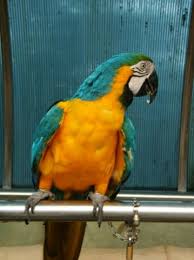 big bird
big birdMigration
Mainarticle:Birdmigration
Manybirdspeciesmigratetotakeadvantageofglobaldifferencesofseasonaltemperatures,thereforeoptimisingavailabilityoffoodsourcesandbreedinghabitat.Thesemigrationsvaryamongthedifferentgroups.Manylandbirds,shorebirds,andwaterbirdsundertakeannuallongdistancemigrations,usuallytriggeredbythelengthofdaylightaswellasweatherconditions.Thesebirdsarecharacterisedbyabreedingseasonspentinthetemperateorarctic/antarcticregionsandanon-breedingseasoninthetropicalregionsoroppositehemisphere.Beforemigration,birdssubstantiallyincreasebodyfatsandreservesandreducethesizeofsomeoftheirorgans.[92][50]Migrationishighlydemandingenergetically,particularlyasbirdsneedtocrossdesertsandoceanswithoutrefuelling.Landbirdshaveaflightrangeofaround2,500km(1,600mi)andshorebirdscanflyupto4,000km(2,500mi),[39]althoughtheBar-tailedGodwitiscapableofnon-stopflightsofupto10,200km(6,300mi).[93]Seabirdsalsoundertakelongmigrations,t
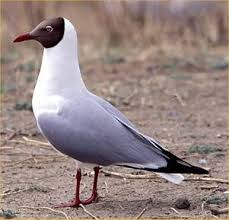 big bird
big bird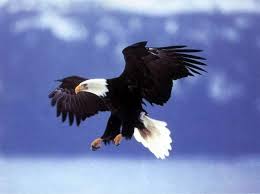 big bird
big birdTheroutesofsatellitetaggedBar-tailedGodwitsmigratingnorthfromNewZealand.Thisspecieshasthelongestknownnon-stopmigrationofanyspecies,upto10,200km(6,300mi).Somebirdspeciesundertakeshortermigrations,travellingonlyasfarasisrequiredtoavoidbadweatherorobtainfood.Irruptivespeciessuchastheborealfinchesareonesuchgroupandcancommonlybefoundatalocationinoneyearandabsentthenext.Thistypeofmigrationisnormallyassociatedwithfoodavailability.[96]Speciesmayalsotravelshorterdistancesoverpartoftheirrange,withindividualsfromhigherlatitudestravellingintotheexistingrangeofconspecifics;ot
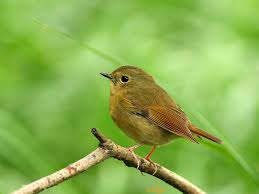 big bird
big bird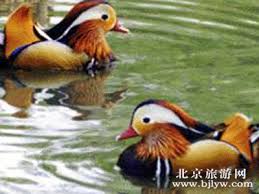 big bird
big bird